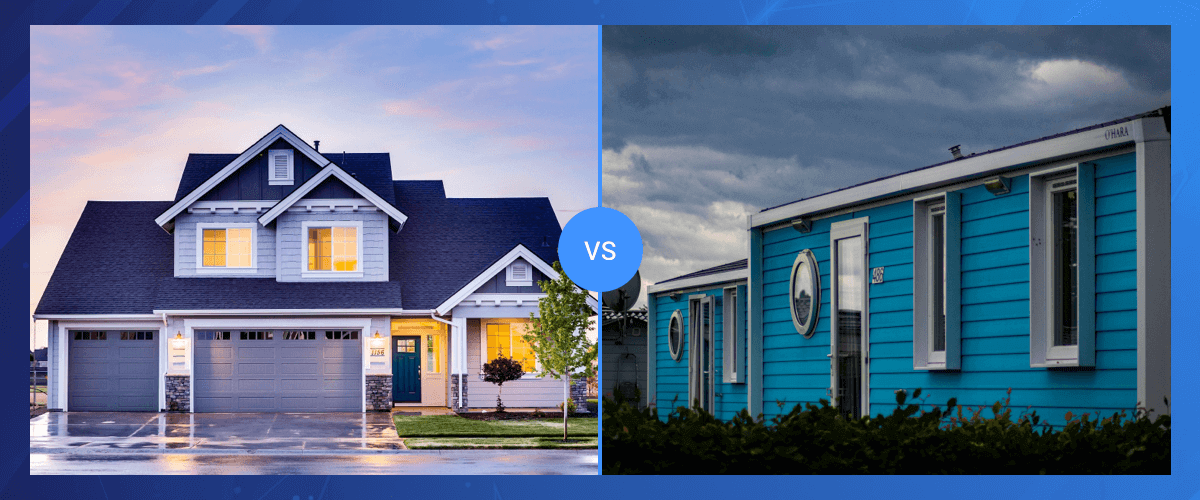You might have heard about modular homes (prefabricated homes) and manufactured homes (mobile homes), but do you know what the difference is?
Before we dive into the differences, let's get the basics out of the way.
What is a Modular Home?
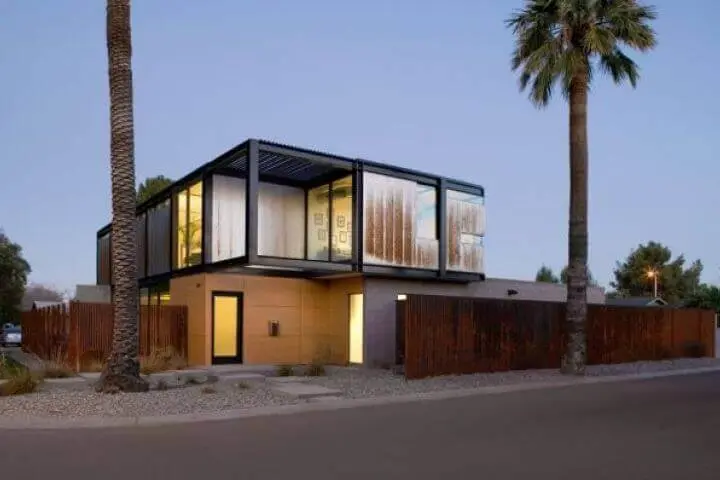
KOMA MODULAR CONSTRUCTION s.r.o., CC BY-SA 3.0 via Wikimedia Commons
Modular homes (sometimes referred to as "prefabricated modular homes" or just "prefabs") are constructed or built in a factory and assembled in sections before being transported to a building site by truck and assembled on site.
Generally, modular homes can follow the same design as site-built homes, because they're equally set on a traditional, physical foundation.
A modular home must be structurally inspected by professionals and certified before anyone can confidently move in. The goal of this structural inspection is to ensure that the building adheres to local building codes. Keep in mind that a home can determine whether the owner enjoys good sleep or stays awake all night.
Prefabricated homes have gained a lot of attention lately and the growth curve continues to climb. This housing trend has exploded in the US, UK and Germany. According to Report Buyer, *"the prefab housing market is projected to reach *$19.3 billion by 2024*." *More importantly, 90% of people are satisfied with these homes.
What is a Manufactured Home?
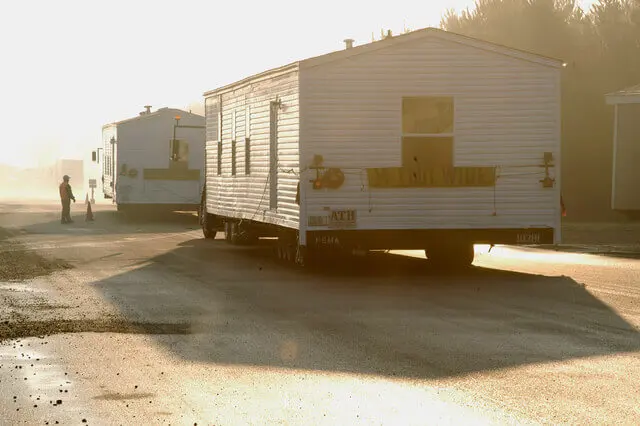
Image source: The U.S. National Archives
Manufactured homes (mobile homes) typically have wheels and are completely built and assembled in a factory. They are then transported to the site, which is why It's very difficult and sometimes, impossible, to improve, renovate, or expand a manufactured home.
Manufactured homes are not anchored to a permanent foundation and so can easily be transported to another location.
Modular vs Manufactured Home: Pros and Cons
| Pros | Cons | |
|---|---|---|
| Modular Homes | Easily to design and build | More costly than a manufactured home |
| Withstands harsh weather conditions | Must meet site-built home building standards | |
| Constructed faster than a site-built home | ||
| Easier to resell than a manufactured home | ||
| Manufactured Homes | Easy to move | It doesn’t appreciate in value |
| Quick to construct | Potential safety risks | |
| Easy to transport | Doesn’t withstand harsh weather conditions |
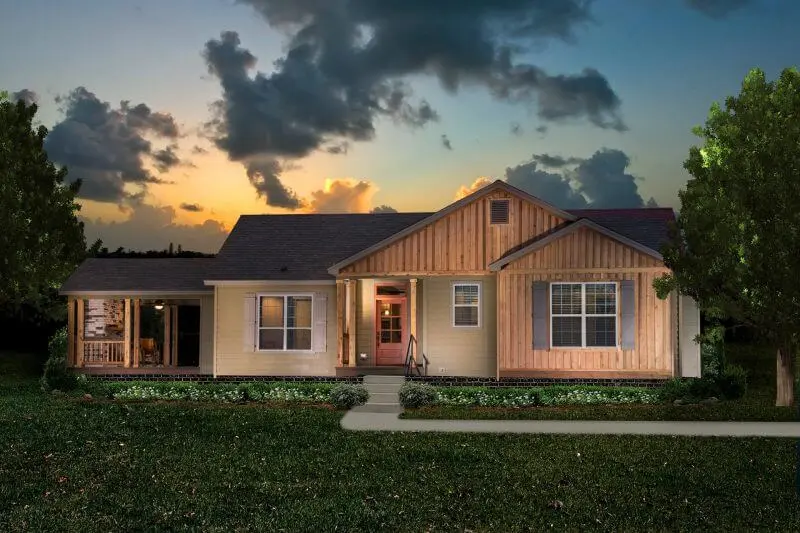
It can be hard to tell the difference between a modular house and a site-built house. Brent Allison, CC BY-SA 4.0, via Wikimedia Commons
Modular vs Manufactured Homes: Design and Options
With both modular and manufactured homes, you have the opportunity to add plenty of cosmetic and design options. Given that one factory builds a modular or manufactured home from start to finish, buyers are given multiple options to customize how their home will look.
Nowadays, it's difficult to distinguish between a modern modular home from a site-built one.

Brent Allison, CC BY-SA 4.0, via Wikimedia Commons
Modular vs Manufactured Homes: Considerations
Safety
Homebuyers (especially those with kids) are always concerned about safety. Did you know that, in the US, 2,200 children die a year from a home injury? It doesn't matter what type of home a buyer is interested in, safety is what counts.
Since modular and manufactured homes are built offsite, a lot of people seem to question the safety of these homes. However, where the home was constructed isn't a benchmark for determining its safety. So, whether it's built on or off-site, they can be both safe or unsafe --- depending on the nature of the buildings. As long as manufactured homes follow the local safety guidelines, people can confidently move in.
Both manufactured and modular homes are built in the same environment: a single controlled factory. The same builders handle everything. When the building is complete, it's conveyed to the home site using trucks. However, the inspection process for manufactured homes varies, so there is a greater risk of potential safety problems.
Cost
In general, manufactured or modular homes are cheaper than site-built homes. Manufactured and modular homes also save time since they take less time to construct than a site-built home.
Interestingly, these savings are reserved for the buyer. Hence, it allows people to construct buildings they wouldn't otherwise be able to afford. In recent times, medical practices around the world are turning to modular-style buildings because it enables them to build faster in times of need.
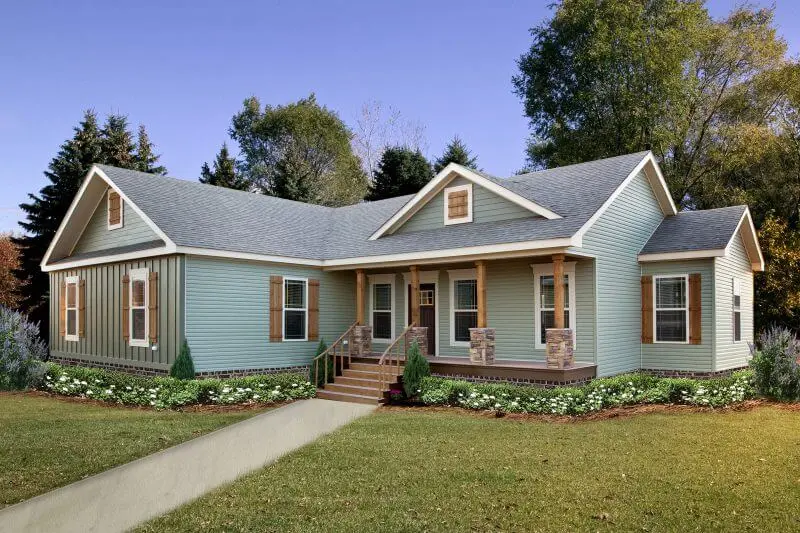
Modular home Brent Allison, CC BY-SA 4.0, via Wikimedia Commons
Checklists for Designing a Modular Home
Let's consider some of the important factors when you're looking to design or live in a modular home.
#1. Budget
What's your budget? Have you planned a contingency fund for unseen complications?
#2. House Design
Designing a modular home is an exciting experience and there are many galleries of standard design templates to get you started. You need to pay close attention to the home design and use floor plans, architectural drawings, or models, to visualize the design. To do this you can use free CAD software, such as BricsCAD Shape to simplify the design process.
#3. Builders and Contractors
You need to invest adequate time to find trustworthy experienced builders and/or contractors.
#4. Planning the Project
A building design will need to be planned at every stage to ensure things run smoothly. You can use a timeline maker to organize and keep track of how much time you've invested. Or you can use a CRM with a predictive dialer, which could act as your project management software for tracking your progress.
#5. Building Permits
Building permits are different from one country to the other and even from one state to the other, so make sure you find out what your country or local area permits. Also, you should consider the lead time it'll require to get permit approval. This tends to take time and often varies, depending on local planning laws.
#6. Finishing Touches
The construction and setup of a modular home at the site is only the beginning. Once the module is completely installed, the essential electrification and utility hookups need to be installed. You also need to beautify, improve, and transform the exterior and interior designs.
Conclusion
Modular vs Manufactured Home which is best? Both Modular homes "prefabs" and manufactured "mobile" homes have their own qualities.
Both modular homes and manufactured homes allow people to experiment and construct beautiful & custom "dream homes" without going through the hassles of traditional site-built construction or investing a ton of money.
Modular homes provide more options, are more resistant to harsh weather conditions and can increase in value, but can't be transported, and cost more money and take more work than manufactured homes.
Manufactured homes are faster and smoother to build, but don't hold their value or offer the same protection from harsh weather conditions.

